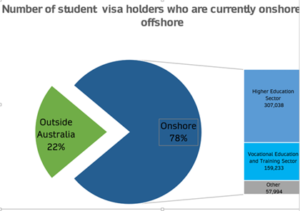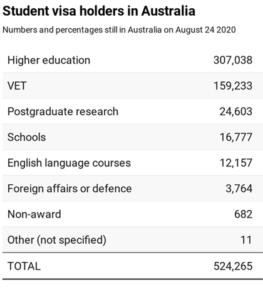Looking after our international students
Eighty per cent of international students are still in Australia despite perceptions that the COVID-19 pandemic has seen the shutdown of international education, according to new research.
And researchers Dr Angela Lehmann and Aasha Sriram say that neglecting international students’ welfare during the pandemic will have a negative effect on the sector’s competitiveness into the future.
 The researchers, from the Australian National University and Melbourne University, say that there are currently around 524,000 international students living in Australia.
The researchers, from the Australian National University and Melbourne University, say that there are currently around 524,000 international students living in Australia.
This represents 78 per cent of all student visa holders, according to Department of Home Affairs data.
“These students are potential ambassadors for Australia and our institutions. They could help shape our country’s reputation as a safe and welcoming destination in the post-pandemic world – but only if we look after them,” the researchers say.
The numbers of students now in Australia vary across sectors. Currently, 73 per cent of Australia’s international higher education students and 78 per cent of postgraduate research students are here.
 The vast majority, or 78 per cent, of international secondary school students are still here too.
The vast majority, or 78 per cent, of international secondary school students are still here too.
The percentage is even higher for vocational education and training with 91 per cent, 159,233, of the sector’s international students still here.
The researchers say that shorter courses that don’t lead to a degree or diploma and English language programs have the largest percentages of students now offshore.
 “The experiences these large numbers of students are having now will have a direct impact on their decisions and patterns of mobility once borders reopen,” they say.
“The experiences these large numbers of students are having now will have a direct impact on their decisions and patterns of mobility once borders reopen,” they say.
“However, institutions and government agencies continue to focus on outward-looking approaches to recovery, such as offshore recruitment and delivery, negotiating pilot safety corridors, and scenario planning for the reopening of borders. The onshore response to international education risks being severely neglected,” the researchers say.












